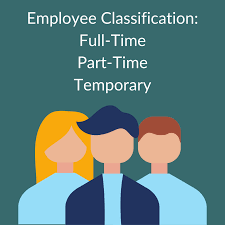Unveiling Employment Classification Complexities: Lessons from Med. Practice Solutions, LLC v. Comm’r of Internal Revenue
In the intriguing legal case of Med. Practice Solutions, LLC v. Comm’r of Internal Revenue, the intricate issue of employment classification takes center stage. The case revolves around the operations of Med. LLC, a medical practice predominantly owned by a single individual – a doctor. Delving into the composition of the workforce, the practice enlisted an office manager, closely associated with the doctor, without the exchange of monetary compensation. In addition, the practice employed four medical assistants who received their payment through cashier’s checks signed by the doctor. Strikingly, the LLC circumvented the obligatory filing of key forms such as 1099s, W-2s, 940s, and 941s.

However, a dispute arose as the IRS challenged this classification, asserting that the workers should be recognized as employees. Consequently, the IRS imposed employment taxes on the LLC. The final verdict favored the IRS, placing considerable emphasis on the extent of control wielded by the LLC over its workforce. Despite arguments highlighting the workers’ apparent autonomy – such as the flexibility to determine their own working hours and the freedom to discontinue their services at will – the scales tipped decidedly in favor of employee classification.
Notably, the medical assistants initially embarked on their journey with the LLC as interns during their academic tenure. Their transition to formal roles post-graduation transpired without a structured hiring process, further muddling the landscape of employment dynamics.
The court acknowledged the ambiguity surrounding the intent behind the establishment of employment relationships. However, the pivotal factor rested on the level of control exercised by the LLC, which, as it emerged, was substantial. The workers adhered to predetermined hourly rates, diligently submitting biweekly time sheets that were subject to approval by the office manager. Direct supervision was vested in both the doctor and the office manager, encompassing strict adherence to established protocols and directives.
The extent of control extended to critical aspects of employment, including the choice of work location, tasks performed, utilization of equipment, and details of remuneration. The absence of avenues for the workers to incur profit or loss, their exclusive commitment to the LLC, and the invocation of the code §530 safe harbor provision was all meticulously evaluated.
In essence, the crux of the matter boiled down to LLC’s inability to substantiate its claim of independent contractor classification. The lack of precedence within federal law or comparable industries for workers in analogous positions significantly weakened their argument. Furthermore, the LLC’s inconsistency in filing crucial tax documents further undercut their position. The absence of 1099s used for reporting payments to be purported independent contractors added yet another layer of complexity to the narrative.
The case of Med. Practice Solutions, LLC v. Comm’r of Internal Revenue serves as an illuminating exemplar within the intricate realm of employment classification. It underscores the critical importance of comprehending the nuances inherent in worker relationships, the essence of control within those relationships, and the significance of adhering to regulatory protocols. As businesses navigate the convoluted terrain of employment classifications, this case emerges as a defining reminder of the significance of judicious classification and meticulous tax filing practices.
